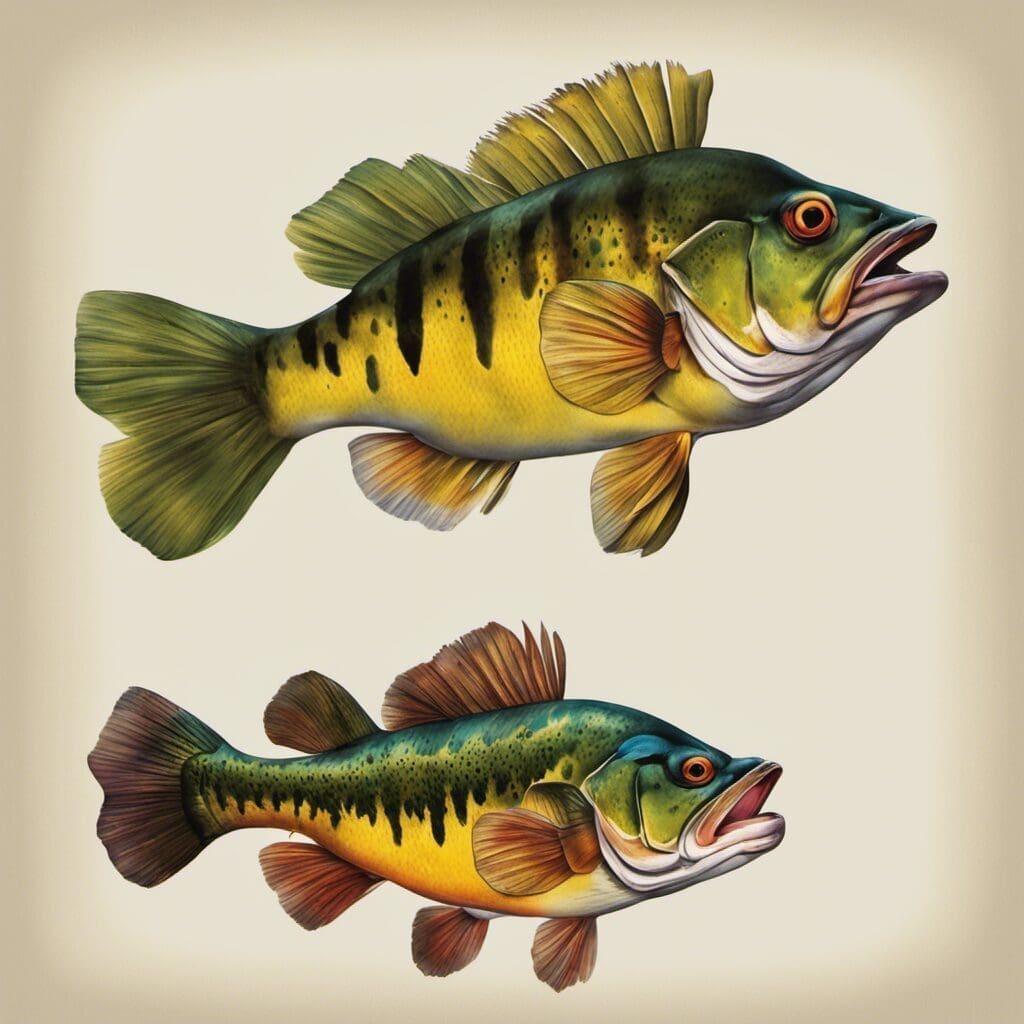Introduction
The Peacock Bass, also known as the Tucunaré, is a fascinating sport fish species from the family Cichlidae. With its stunning colors and aggressive behavior, the Peacock Bass has become a favorite for anglers worldwide.
Conservation Status
Currently, most varieties of Peacock Bass are listed as “Least Concern” by various conservation organizations, indicating that this species is relatively plentiful and not currently threatened. Conservation efforts for this species primarily focus on habitat preservation and managing the impact of invasives species.
Statistics
Key statistics about the Peacock Bass are shown in the table below:
| Statistic | Average | Range |
|---|---|---|
| Length | 24 inches (60 cm) | 12 – 39 inches (30 – 99 cm) |
| Weight | 6 pounds (2.7 kg) | 2 - 27 pounds (0.9 - 12 kg) |
| Average Lifespan | 10 years |
Distribution
Originally native to the Amazon River basin, the Peacock Bass has been introduced to other areas such as Florida, Hawaii, and Texas. Despite being a tropical species, the Peacock Bass has shown surprising adaptability to different habitats. They do not exhibit standard migration patterns.
Habitats
The Peacock Bass prefers freshwater environments like rivers and lakes, with a depth range of 3 to 12 meters. They thrive in warm temperatures between 24 to 30°C (75 to 86°F).
When and Where to See
Peacock Bass are most active in the daytime, especially in the early morning and late afternoon. Their active periods align with the seasonal water levels; they are less active in high water, usually during the rainy season.
Best Fishing Locations
While the Peacock Bass can be found in various regions, here are the top 10 specific locations recognized globally for Peacock Bass fishing:
- Rio Negro, Brazil
- Lake Gatun, Panama
- Everglades, Florida, USA
- Lake Ida, Florida, USA
- Arepucas Lake, Honduras
- Kuala Rompin, Malaysia
- Lake Huites, Mexico
- Canterbury Lake, Florida, USA
- Lake Wilson, Hawaii, USA
- Hazlett State Lake, Nebraska, USA
How to Catch
The most preferred bait for Peacock Bass are live shiners and artificial lures that mimic their natural prey. Anglers often use techniques such as casting, trolling, and even fly fishing. The best fishing times coincide with their active periods, which are early morning and late afternoon.
Identification Guide
The Peacock Bass is known for its vibrant colors, large hump on the foreheads of larger individuals, and the distinctive black ”eyespot” on its tail. They are often confused with other large cichlids, but the unique coloration and markings of the Peacock Bass set it apart.
Culinary
Peacock Bass is not commonly eaten in places where it is a prized game fish. However, in some areas, it is baked, grilled, or pan-seared and is known to have a sweet, mild taste. It is a good source of lean protein, fatty acids, and essential nutrients like potassium and vitamin D.
Additional Information
The Peacock Bass is a predatory fish that primarily consumes smaller fish and crustaceans. They have an aggressive nature, which makes them vulnerable to anglers but also effective at controlling populations of invasive fish species. Their vibrant colors have earned them a place in local folklore, particularly in the Amazon, where they are viewed as a symbol of the vibrant life and biodiversity of the region.
References and Further Reading
1. Florida Fish and Wildlife Conservation Commission – Peacock Bass
2. IGFA World Records for Peacock Bass
4. Epicurious – Brazilian Peacock Bass Recipe

